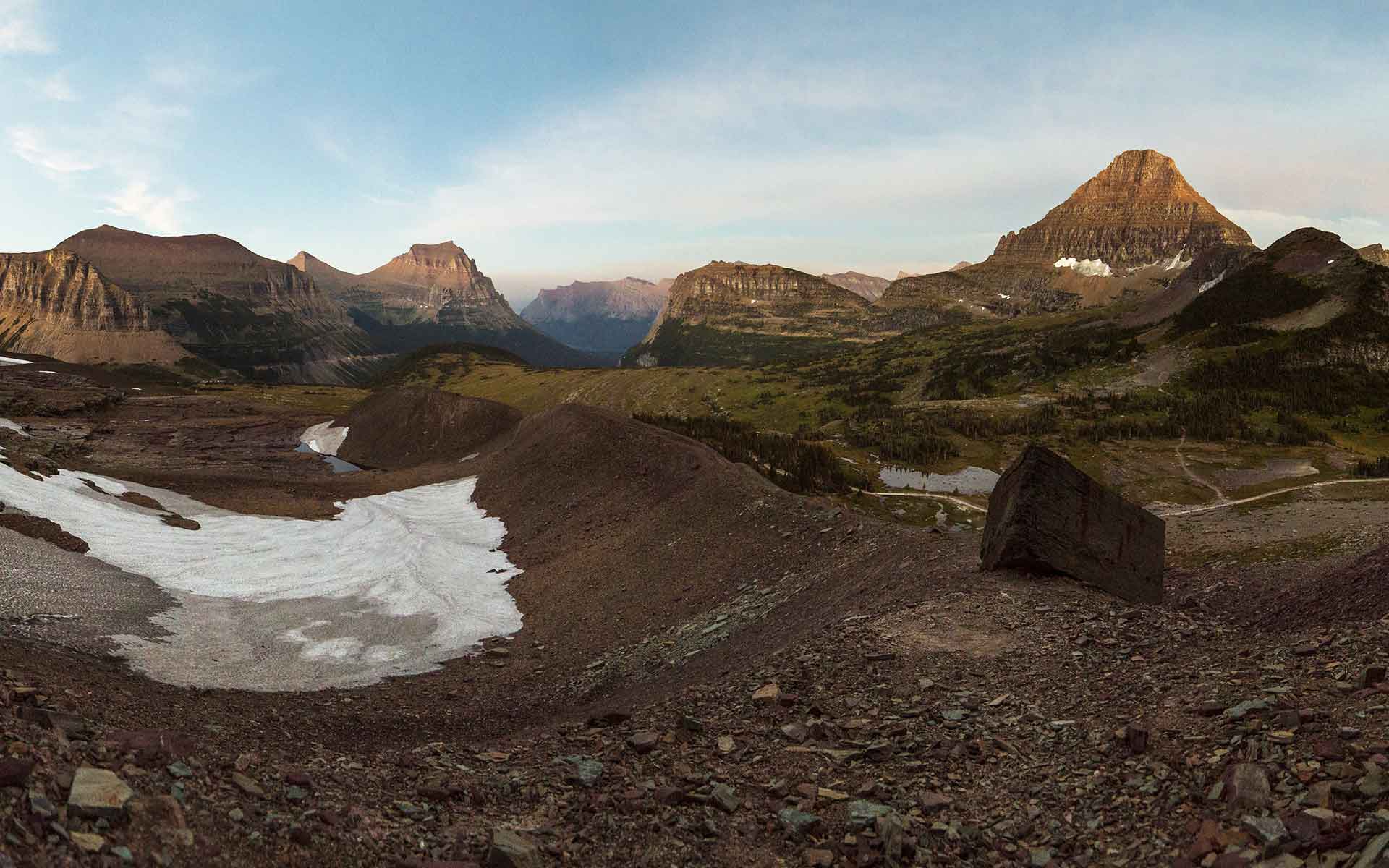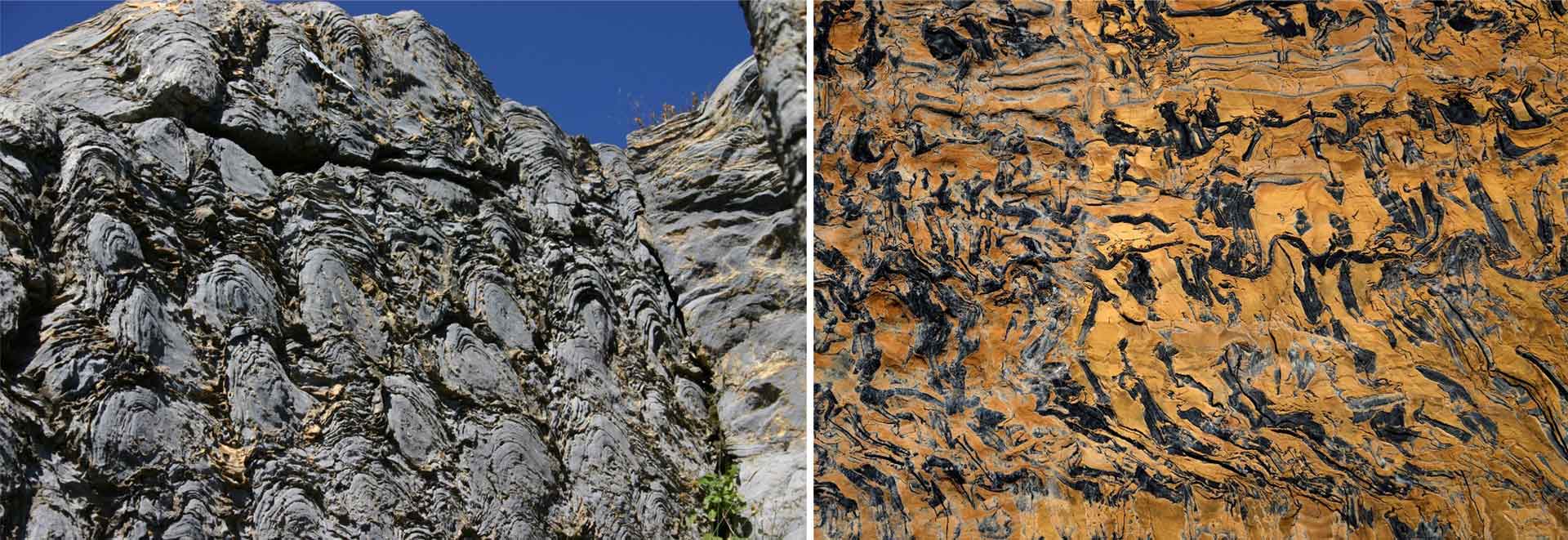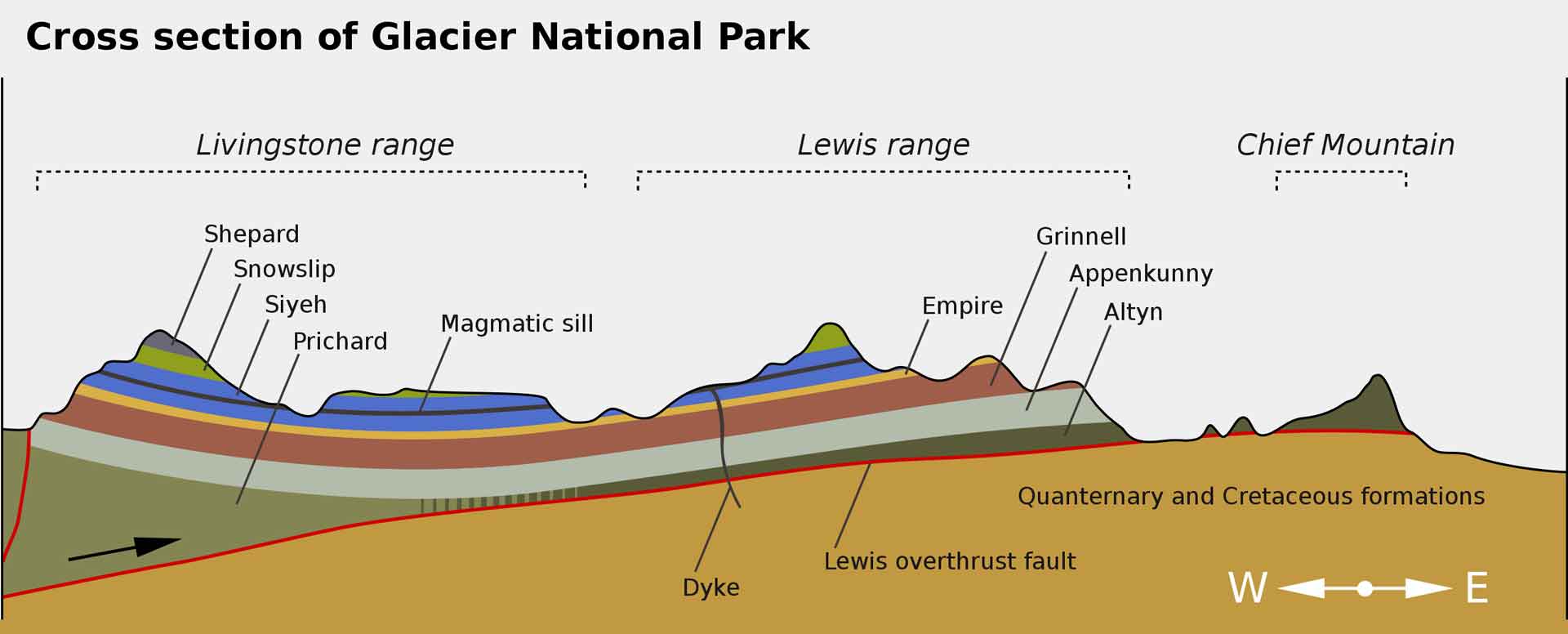
Majestic view of expansive slopes of Mesoproterozoic sedimentary rock carved by glacial processes still active throughout Waterton-Glacier International Peace Park.
Geological Period
Mesoproterozoic
Main geological interest
History of geosciences
Stratigraphy and sedimentology
Location
Waterton-Glacier International Peace Park, northwestern Montana, USA and southwestern Alberta, Canada
48°57’29”N, 113°53’31”W
Majestic view of expansive slopes of Mesoproterozoic sedimentary rock carved by glacial processes still active throughout Waterton-Glacier International Peace Park.
The thickest sedimentary succession on earth capturing pristine Precambrian rock, spectacularly exposed by intensive glacial carving.
The Belt-Purcell Supergroup of western Montana, central and northern Idaho, and southwestern Canada is one of the largest and best studied Mesoproterozoic sedimentary basins in the world. These ancient rocks are relatively undeformed by tectonic forces and undisturbed by plants and animals, resulting in the preservation of pure sedimentary processes, making them one of the world’s finest examples of Precambrian sedimentary rock (Winston and Link, 1993). Intensive glacial erosion of this strata has led to spectacular exposures that have fascinated geologists for over a century. The site is part of Waterton-Glacier International Peace Park UNESCO World Heritage Site.
- Geological description
The Belt-Purcell Supergroup is an immense package of sedimentary rocks resulting from passive rifting within supercontinent Nuna starting approximately 1.5 billion years ago. This event created a large, intracratonic basin that, during the Mesoproterozoic, filled with up to 11 mi (18 km) of sand, silt, clay, and carbonate sediments resulting in the thickest sedimentary succession on earth (Lonn et al., 2020). Concepts stemming from these rocks not only capture a unique stratigraphic setting, but have implications for other strata of pre-Cambrian age, and the entire Phanerozoic.
Extensive quaternary glaciation throughout northwestern Montana, USA and southwestern Alberta, CA has resulted in incredible exposures of Precambrian age Belt-Purcell Supergroup in Waterton-Glacier International Peace Park, which, in the Tertiary were displaced eastward onto Cretaceous rocks by the Lewis overthrust fault (Thornberry-Ehrlich, 2004).
The site contains seventeen stratotypes all within the Belt-Purcell Supergroup: two type sections, fourteen type localities, and one reference section (Henderson et al., 2020). These stratotypes serve as world-class references for exceptionally preserved sedimentary features like ripples, mud cracks, and crossbedding as well as “molar-tooth” structures, and a variety of stromatolite fossils comprising one of the richest accumulations of Precambrian life in North America (Walcott, 1899).
- Scientific research and tradition
For decades, the immense exposure of the unique strata of the Belt-Purcell Supergroup has drawn generations of geologists to study Earth’s early geological processes. Researchers investigating the complexity within facies are challenging long-held interpretations, leading to continuously evolving conclusions and passionate debates on its origin and depositional environment (Pratt and Rule, 2021).
- Reference
Henderson, T. et al. (2020) National Park Service geologic type section inventory: Rocky Mountain Inventory & Monitoring Network. NPS/ROMN/NRR—2020/2215. Fort Collins, Colorado: National Park Service. Available at: https://doi.org/10.36967/nrr-2283702.
Lonn, J.D. et al. (2020) ‘The Mesoproterozoic Belt Supergroup’, Montana Bureau of Mines Special Publication, 120, p. 38.
Pratt, B.R. and Rule, R.G. (2021) ‘A Mesoproterozoic carbonate platform (lower Belt Supergroup of western North America): Sediments, facies, tides, tsunamis and earthquakes in a tectonically active intracratonic basin’, Earth-Science Reviews, 217, p. 103626. Available at: https://doi.org/10.1016/j.earscirev.2021.103626.
Thornberry-Ehrlich, T.L. (2004) Glacier National Park: geologic resource evaluation report. Denver, Colorado : Washington, D.C: Geologic Resources Division, Natural Resource Program Center ; U.S. Department of the Interior (Natural resource report, NPS/NRPC/GRD/NRR 2004/001). Available at: http://www.npshistory.com/publications/glac/nrr-2004-001.pdf.
Walcott, C.D. (1899) ‘Pre-Cambrian fossiliferous formations’, GSA Bulletin, 10(1), pp. 199–244. Available at: https://doi.org/10.1130/GSAB-10-199.
Winston, D. and Link, P.K. (1993) ‘Middle Proterozoic rocks of Montana, Idaho and eastern Washington: The Belt Supergroup’, in J.C. Reed et al. (eds) The Geology of North America, Precambrian: Conterminous US. Geological Society of America, Boulder, Colorado, pp. 487–517.
- Author(s)
Kylie Caesar.
National Park Service, Glacier National Park. USA.
Tara Carolin.
National Park Service, Glacier National Park. USA.
Teagan Tomlin.
National Park Service, Glacier National Park. USA.
Richard Menicke.
National Park Service, Glacier National Park. USA.
Locke Marshall.
Parks Canada, Waterton Lakes National Park. USA.


